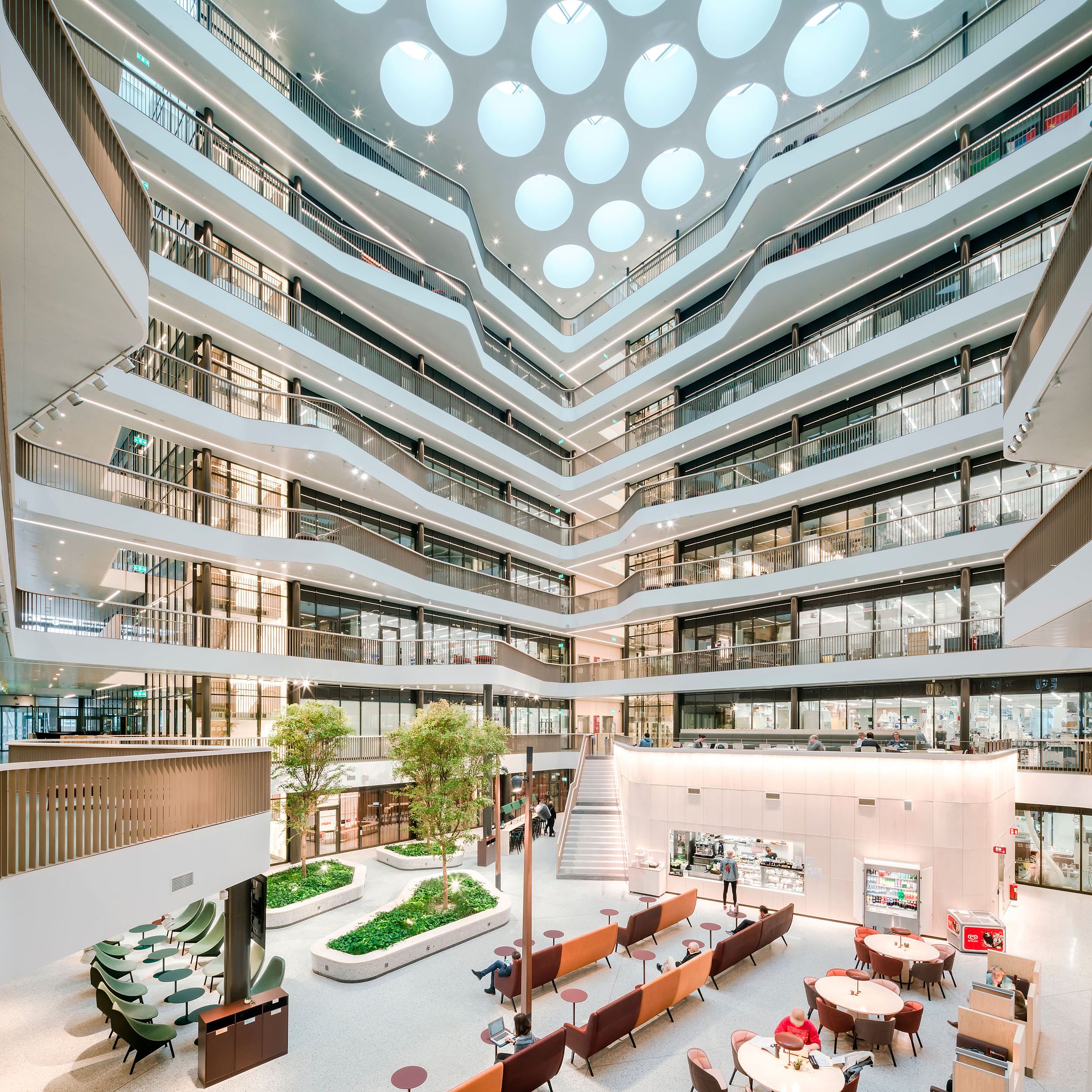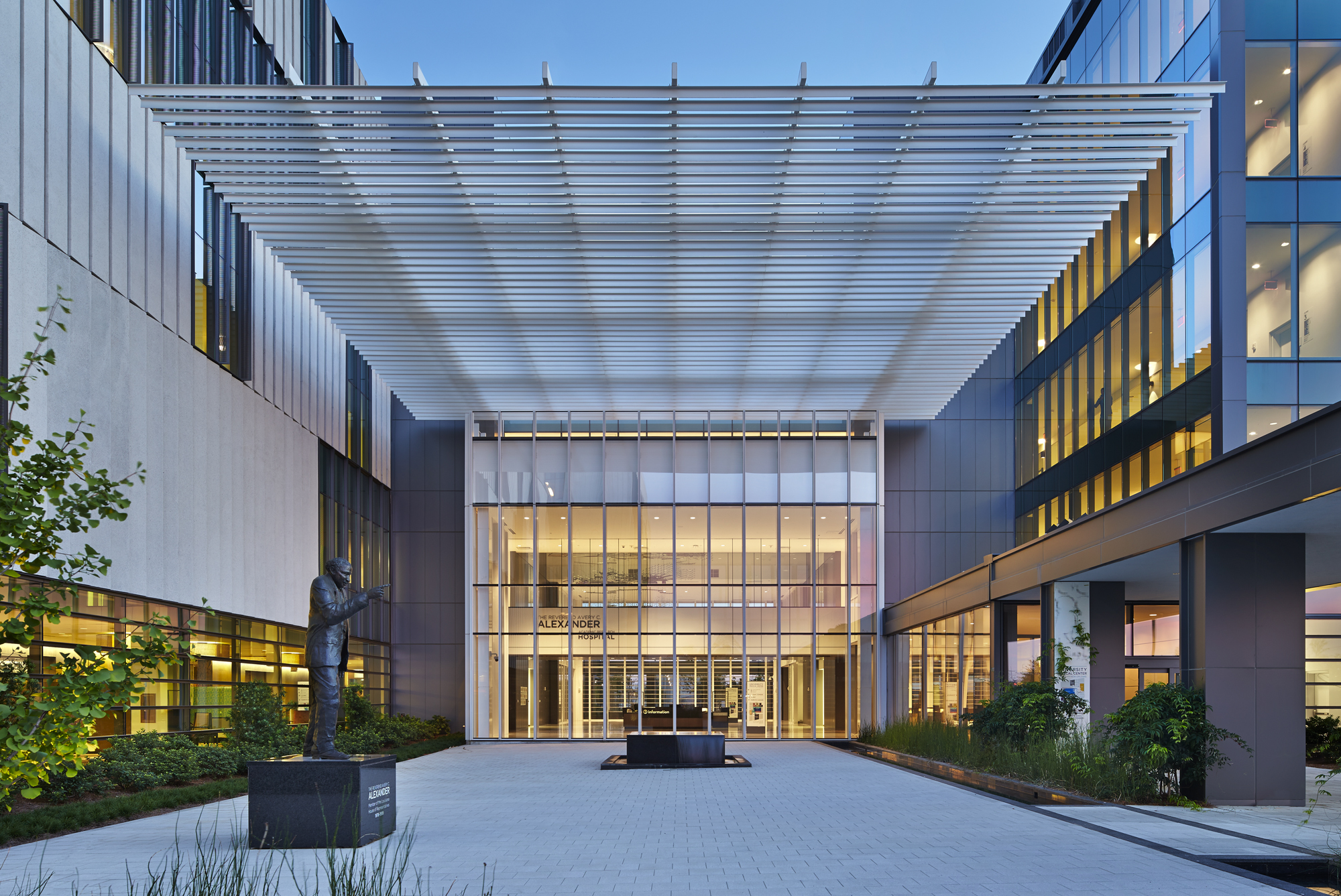Exploring the Impact of Healthcare Architecture
Delving into the realm of healthcare architecture, this article sheds light on the critical role architecture plays in shaping healthcare environments. From enhancing patient well-being to incorporating innovative design principles, the world of healthcare architecture is a fascinating blend of aesthetics and functionality.
Overview of Healthcare Architecture

Healthcare architecture plays a crucial role in creating healing environments that promote patient well-being and safety. The design of healthcare facilities goes beyond aesthetic appeal, focusing on functionality and efficiency to support the delivery of quality care.
Importance of Architecture in Healthcare Settings
Architecture in healthcare settings is essential for creating spaces that facilitate effective patient care, staff workflows, and overall operational efficiency. The layout and design of healthcare facilities impact not only the physical well-being of patients but also their emotional and psychological state during treatment.
Impact of Healthcare Architecture on Patient Well-being
- Enhanced Healing Environment: Thoughtfully designed spaces can contribute to reducing stress and anxiety levels among patients, promoting faster recovery and overall well-being.
- Optimized Patient Experience: Well-planned layouts that consider patient comfort and privacy can improve the overall experience and satisfaction of individuals seeking medical care.
- Promotion of Safety and Infection Control: Healthcare architecture incorporates elements to ensure the safety of patients, staff, and visitors, as well as strategies to prevent the spread of infections within the facility.
Key Design Principles in Healthcare Architecture
Healthcare architecture is guided by specific design principles that differentiate it from other types of architecture, emphasizing the unique needs and requirements of healthcare facilities:
- Flexibility and Adaptability: Spaces should be designed to accommodate changing technologies, medical practices, and patient volumes over time.
- Efficiency and Flow: Layouts should optimize the movement of patients, staff, and supplies to enhance operational efficiency and reduce wait times.
- Patient-Centered Design: Focus on creating environments that prioritize patient comfort, privacy, and dignity throughout their healthcare journey.
- Infection Control: Incorporation of design elements and materials that promote cleanliness, reduce the risk of infections, and support effective sanitation practices.
Design Considerations in Healthcare Architecture
When designing healthcare facilities, there are specific requirements that must be taken into account to ensure the safety, comfort, and well-being of patients, staff, and visitors.
Significance of Natural Light and Ventilation
Natural light and ventilation play a crucial role in healthcare building design as they have a direct impact on the overall health and well-being of occupants. Properly designed spaces with abundant natural light not only improve the mood and morale of patients but also help in reducing stress and anxiety levels.
Additionally, adequate ventilation is essential to maintain air quality and prevent the spread of infections within healthcare facilities.
Role of Technology Integration
Technology integration is becoming increasingly important in modern healthcare architecture. From electronic medical records systems to telemedicine platforms, technology is revolutionizing the way healthcare is delivered. Integrating technology into the design of healthcare facilities can improve efficiency, communication, and patient care outcomes
Smart building technologies can also help in optimizing energy consumption and enhancing the overall operational efficiency of healthcare facilities.
Patient-Centered Design

Patient-centered design in healthcare architecture focuses on creating spaces that prioritize the comfort, safety, and well-being of patients. By incorporating elements that cater to the needs and preferences of patients, healthcare facilities can enhance the overall patient experience and contribute to improved outcomes.
Enhancing Patient Experience
Patient-centered design can enhance the patient experience in various ways. For example, natural light and views of nature can help reduce stress and anxiety, promoting healing and recovery. Comfortable furniture, soothing colors, and artwork can create a calming environment that supports emotional well-being.
Additionally, incorporating private spaces for consultations and family interactions can enhance privacy and dignity for patients.
Impact of Color, Layout, and Accessibility
Color, layout, and accessibility play crucial roles in patient well-being within healthcare facilities. Warm and soothing colors, such as blues and greens, can create a sense of tranquility and promote relaxation. A well-thought-out layout that minimizes noise and distractions can contribute to a healing environment.
Moreover, ensuring accessibility for patients with mobility challenges or disabilities is essential for creating an inclusive and accommodating space.
Sustainable Practices in Healthcare Architecture
Sustainability in healthcare architecture is crucial not only for reducing the environmental impact but also for creating healing environments that benefit patients, staff, and visitors. By incorporating green building practices and eco-friendly materials, healthcare facilities can promote a healthier planet and improve overall well-being.
Integration of Green Building Practices
- Green building practices such as incorporating energy-efficient systems, utilizing renewable energy sources, and optimizing natural light can significantly reduce the carbon footprint of healthcare facilities.
- Integrating sustainable landscaping, rainwater harvesting, and efficient waste management systems can further enhance the environmental sustainability of healthcare architecture.
- By designing buildings that are energy-efficient and environmentally friendly, healthcare facilities can lower operational costs and contribute to long-term savings.
Benefits of Eco-Friendly Materials and Energy-Efficient Systems
- Using eco-friendly materials such as recycled content, low VOC paints, and sustainable wood can improve indoor air quality and reduce harmful emissions in healthcare settings.
- Energy-efficient systems like LED lighting, smart HVAC systems, and solar panels can lower energy consumption, decrease utility bills, and create a healthier indoor environment for patients and staff.
- By prioritizing sustainability in healthcare architecture, facilities can enhance patient outcomes, increase staff satisfaction, and demonstrate a commitment to environmental stewardship.
Conclusive Thoughts
In conclusion, healthcare architecture is not just about structures; it's about creating spaces that promote healing and wellness. By prioritizing patient-centered design, sustainable practices, and cutting-edge technology integration, healthcare architecture continues to evolve to meet the ever-changing needs of patients and healthcare professionals alike.